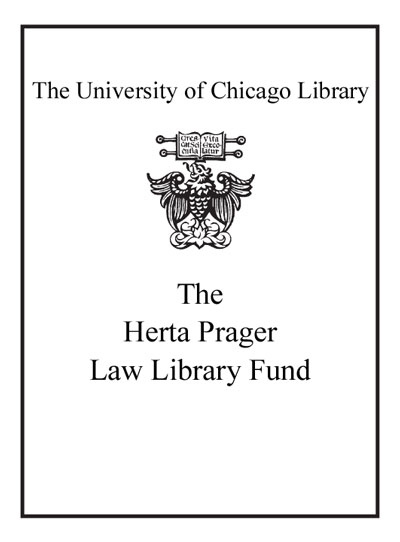Freedom of expression : a critical and comparative analysis /
Saved in:
| Author / Creator: | Zeno-Zencovich, Vincenzo. |
|---|---|
| Imprint: | Abingdon, Oxon [England] ; New York : Routledge-Cavendish, 2008. |
| Description: | ix, 148 p. ; 23 cm. |
| Language: | English |
| Series: | University of Texas at Austin studies in foreign and transnational law |
| Subject: | |
| Format: | Print Book |
| URL for this record: | http://pi.lib.uchicago.edu/1001/cat/bib/7366723 |
Table of Contents:
- Introduction
- Chapter 1. Freedom to Print or Freedom of the Press?
- 1.1. The printing industry
- 1.2. Freedom to print
- 1.3. Limits to freedom to print and freedom of the press
- 1.3.1. The distinction between individual and corporate exercise
- 1.3.2. Distinctions based on the content of what is expressed
- 1.3.3. Information as a product
- 1.4. Facts vs. opinions
- 1.5. A framework for informational activity
- 1.6. The press as power
- 1.7. The myth of public opinion
- Chapter 2. Broadcasting
- 2.1. Control over broadcasting media
- 2.2. Pluralism
- 2.3. Broadcasting as an entertainment industry
- 2.4. Broadcasting and public service
- 2.5. Television as a 'bad teacher'
- 2.6. Television and televisions
- 2.7. TV broadcasting and political communication
- Chapter 3. Journalistic Activity
- 3.1. Journalism as an occupation
- 3.2. Access to the profession
- 3.3. Informational privileges
- 3.4. Journalists and professional diligence
- Chapter 4. Freedom of Expression as an Alienable Right
- 4.1. The issue of so-called 'inalienable rights'
- 4.2. The obligation to express a certain opinion
- 4.3. The obligation not to express one's own opinions
- Chapter 5. Advertising
- 5.1. Advertising as part of the product
- 5.2. Commercial advertising as part of the market
- 5.3. 'Harmful' ideas
- 5.4. Advertising as a means of financing freedom of expression
- Chapter 6. Freedom of Expression and Economic Regulation
- 6.1. Ideas as products
- 6.2. Business information
- 6.3. Information and competition
- 6.4. Market failures and public regulation
- Chapter 7. The Main Areas of Conflict: Pornography, Peaceful Coexistence, National Security
- 7.1. Freedom of expression and public morality
- 7.2. Incitement and 'fighting words'
- 7.3. National security and wartime
- Chapter 8. Towards a European Framework?
- 8.1. A civil law/common law divide
- 8.2. The making of a European ius commune
- 8.3. The role of the Council of Europe
- 8.4. The 'TV without frontiers' Directive
- 8.5. 'Freedom of the media' in the European Charter of Fundamental Rights
- 8.6. Pluralism and media diversity
- 8.7. The fruits - and contradictions - of convergence
- Chapter 9. Freedom of Expression in the Internet Age
- 9.1. Freedom of expression as an individual freedom
- 9.2. The media and the loss of their intermediary role
- 9.3. A world of information
- 9.4. Rules for communicating on the web
- 9.5. How the communications networks influence freedom of expression
- 9.6. Limitations to freedom on the Internet
- 9.7. Business activity on the Internet
- 9.8. The trans-national dimension
- Chapter 10. From Information, to Communication, to Knowledge
- 10.1. Freedom to disseminate data
- 10.2. The right to access information
- 10.3. The right to be informed
- 10.4. Legal information as a right
- 10.5. The juridification of information and knowledge
- 10.5.1. Patents law
- 10.5.2. Software protection
- 10.5.3. Database protection
- 10.5.4. Protection of know-how
- 10.5.5. Copyright
- 10.5.6. Industrial secrets
- 10.5.7. Protection of personal data
- 10.6. The knowledge society
- Chapter 11. Conclusive Remarks
- 11.1. Freedom of expression as a variable freedom
- 11.2. A relational freedom
- 11.3. A functional freedom
- 11.4. An individual freedom
- 11.5. A freedom at a cost
- References
- Index

